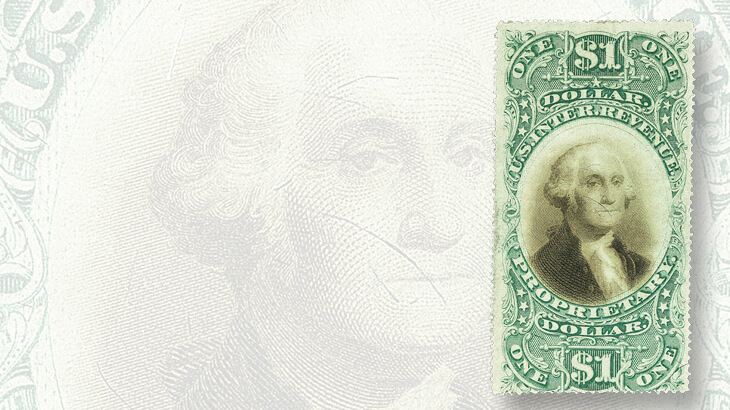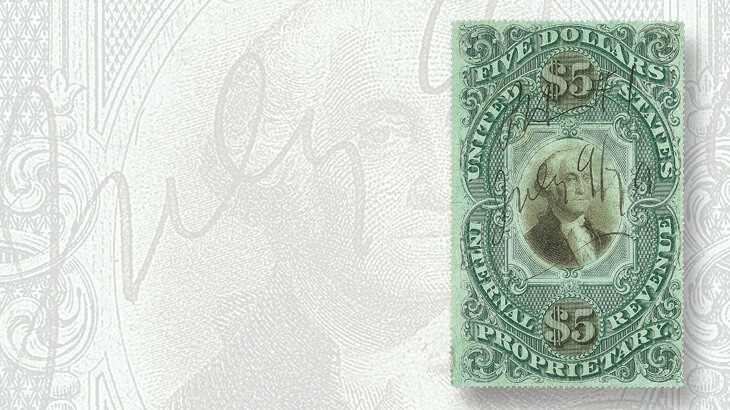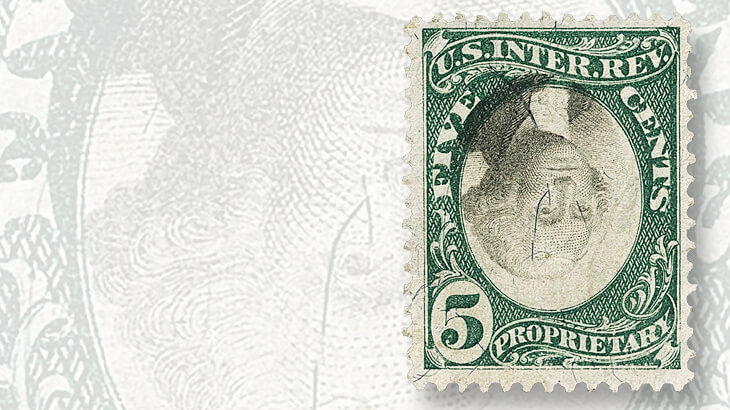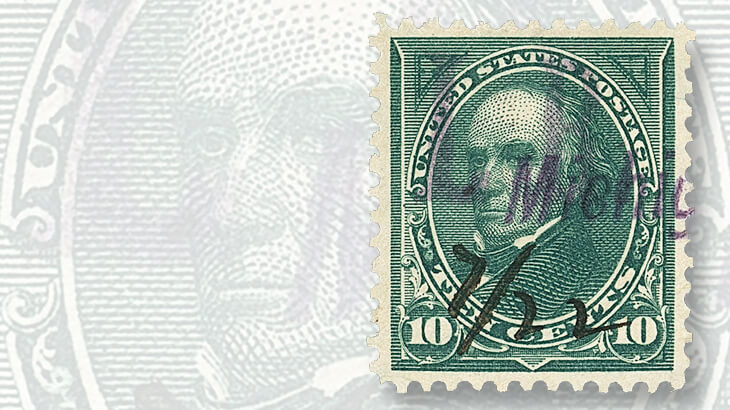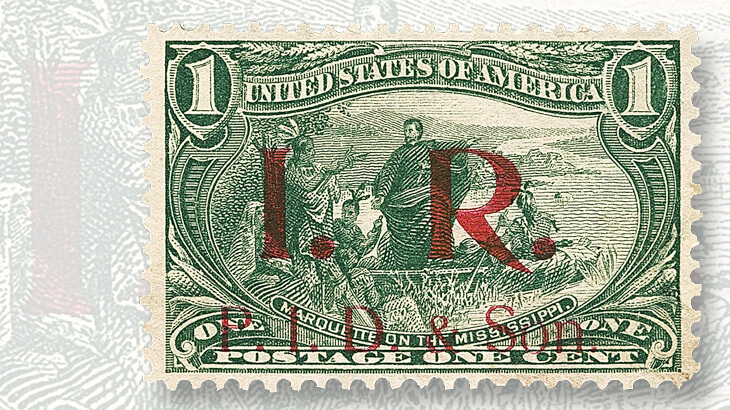Auctions
Rare 19th-century U.S. provisional overprints highlight Siegel’s Inman sale
Auction Roundup — By Matthew Healey, New York Correspondent
By modern standards, the Spanish-American War of 1898 was a quickie. Declared in April, it was done by August, having lasted just 10 weeks.
It was immediately clear that money to fight the war was going to be an issue.
After some wrangling, Congress passed the War Revenue Act, putting in place a range of new taxes. President William McKinley signed it into law June 13, and it took effect July 1.
Connect with Linn’s Stamp News:
Sign up for our newsletter
Like us on Facebook
Follow us on Twitter
Chief among the law’s provisions, from a philatelic standpoint, was its call for new revenue stamps to show payment of taxes on certain kinds of business and legal documents as well as various commodities.
The Bureau of Engraving and Printing was already at work on a series, including the now-famous “battleship” design, depicting the USS Maine, but it was impossible to get the required stamps out in the mere 17 days before the law took effect.
As a stopgap, provisional overprints were applied to existing postage stamps, marking the first time the United States had resorted to surcharging stamps.
Many collectors have come across 1¢ and 2¢ stamps from the 1890s bearing the large initials “I.R.” for Internal Revenue (Scott R153-R155, R155A), which are common.
A few of the provisionals, however, are very scarce.
A selection of these more elusive types was featured in the fourth part of the Grant Inman collection of U.S. revenues, offered by Robert A. Siegel Auction Galleries in New York on Feb. 28.
The 8¢ violet-brown Sherman, 10¢ dark green Webster, and 15¢ dark blue Clay stamps of the 1894-98 definitive (regular-issue) series were privately handstamped “I.R.” in small numbers by the Michigan Mutual Life Insurance Co.
In each case, the handstamp appears faintly in violet, complemented by a manuscript notation or other handstamp.
Although not produced by the federal government, these emergency overprints were accepted as legitimate, and are listed in the Scott Specialized Catalogue of United States Stamps and Covers as R156-R158. The Inman sale included one of each.
A beautiful example of the 10¢ Webster, with the “I.R.” overprint clearly legible, sold for $2,950, including the 18 percent buyer’s premium Siegel adds to all lots.
Meanwhile, along the Erie Canal, in central New York, a steamboat captain L.H. Chapman sought and got the federal government’s permission to convert a few sheets of the 1¢ Trans-Mississippi commemorative to pay the tax on freight documents.
A local printer overprinted five sheets for each of two clients: “I.R./L.H.C.” and “I.R./P.I.D. & Son.”
Twenty of the first but only four of the latter survive, of which three are unused. The unused example in the Inman sale, with a repaired tear but said to have the best centering of the three, sold for $20,060.
Proprietary revenue stamps were used to pay taxes on various privately made goods. Generally, these were custom-designed “private-die” stamps, but generic government issues also were produced, beginning in the 1860s, showing a portrait of George Washington in a fancy green frame.
The dollar-denominated proprietary revenue stamps of 1871-74 are as spectacular as any ever issued, rivaling the famous “Persian Rug” revenues in their ornate beauty. They were printed on a variety of violet-to-greenish papers, of which the latter command a premium.
A $1 proprietary stamp on greenish paper (Scott RB9b) with original gum is thought to be one of fewer than 10 examples surviving, and the sole unused example. It sold for $23,600.
Only 50 of the $5 proprietary stamp (Scott RB10b) were printed on green paper, and of those, just three appear to have survived to the present day. The example in the Inman sale, claimed to be the finest of the three, brought $50,150.
The bicolored proprietary series, being printed from two engraved plates, includes the inevitable inverted-center errors on many denominations — many incredibly rare. The 5¢ (Scott RB5c) is unique.
Siegel’s sale description points out that of all the unique stamps in U.S. philately (and there are a few), the 5¢ proprietary invert is the only one (besides carrier and local stamps) that is face-different, meaning it is distinguished by its design alone, rather than by some subtle paper, perforation, shade or other variety of a more common design.
With a provenance stretching back to Hiram Deats (1870-1963), the doyen of American revenue stamp collecting, the invert was described as “key to any complete revenue collection or collection of inverts.” It was knocked down for an impressive $159,300.
MORE RELATED ARTICLES
Headlines
-
US Stamps
Oct 7, 2024, 12 PMVasiliauskas named president of Mystic Stamp Co.
-
US Stamps
Oct 6, 2024, 5 PMApgar souvenir card available
-
US Stamps
Oct 6, 2024, 4 PMFirst Continental Congress and U.N. stamps receive Scott catalog numbers
-
World Stamps
Oct 5, 2024, 1 PMCanada Post continues Truth and Reconciliation series
